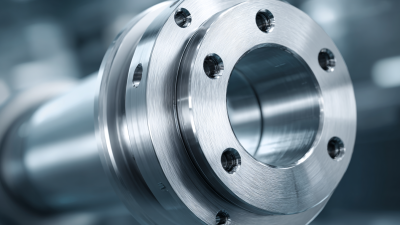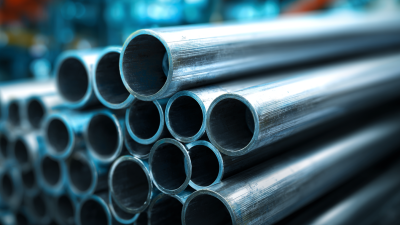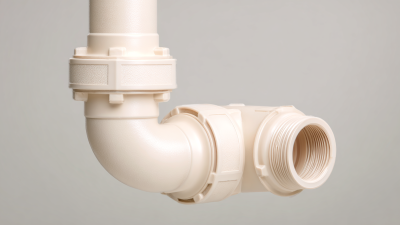In the realm of HVAC systems, the efficiency of airflow plays a critical role in determining the overall performance and energy consumption of heating and cooling systems. Among the various components that influence airflow dynamics, the Rectangular Duct Elbow stands out as a pivotal element. This comprehensive guide aims to explore the essential features and considerations for selecting the best Rectangular Duct Elbow, ensuring optimal airflow efficiency for your specific application.

Given that every duct system has unique demands, understanding the nuances of different elbow configurations, angles, and materials is crucial. We will delve into the various types of Rectangular Duct Elbows available in the market, each designed to facilitate seamless transitions and minimize turbulence in airflow. By doing so, we hope to provide insights that will empower you to make informed decisions when choosing the right components for your HVAC system, ultimately enhancing energy efficiency and performance.
Whether you're a seasoned professional or a newcomer in the HVAC field, this guide will equip you with the knowledge necessary to navigate the options available and achieve the best outcomes for your projects.
When selecting the best rectangular duct elbow, understanding airflow dynamics is crucial for ensuring optimal efficiency in HVAC systems. Airflow within duct systems can be significantly impacted by the design and orientation of duct elbows. According to the "ASHRAE Handbook of Fundamentals," the loss coefficient for typical rectangular bends can vary widely, ranging from 1.5 to 2.5 depending on the angle and radius of the elbow. This highlights the importance of choosing elbows that minimize pressure losses for improved airflow performance.
Research indicates that the standard 90-degree elbow often results in a pressure drop that can be 20% higher than a gradually tapered elbow. A study conducted by the Air-Conditioning, Heating, and Refrigeration Institute (AHRI) emphasizes that smoother transitions and longer, more gradual bends can significantly reduce turbulence and enhance air distribution efficiency. For instance, using a 45-degree elbow instead of a traditional 90-degree elbow can decrease the pressure loss and improve the overall energy efficiency of the system by up to 15%. Thus, when designing ductwork, selecting the right elbow based on airflow dynamics is paramount for achieving optimal efficiency in HVAC applications.
| Dimension (inches) | Angle of Bend | Airflow Resistance (Pa) | Material Type | Recommended Maximum Airflow (CFM) |
|---|---|---|---|---|
| 10 x 6 | 45° | 100 | Galvanized Steel | 500 |
| 12 x 8 | 30° | 70 | Aluminum | 600 |
| 14 x 10 | 90° | 130 | PVC | 800 |
| 16 x 10 | 45° | 110 | Galvanized Steel | 700 |
| 18 x 12 | 60° | 150 | Aluminum | 900 |
When selecting a rectangular duct elbow, understanding key design considerations is essential for optimizing airflow efficiency. One important factor is the radius of the elbow. A larger radius promotes smoother transitions and minimizes airflow resistance, resulting in improved performance. It's advisable to opt for long-radius elbows when feasible, especially in systems where maintaining optimal airflow is a priority.
Tips: Always consider the duct size and the volume of air that needs to be moved. Proper sizing ensures that the elbow does not create excessive turbulence, which can hinder system efficiency. Additionally, examining the material of the duct elbow is crucial; lightweight, durable materials can reduce energy loss and maintenance costs over time.
Another crucial aspect is the angle of the elbow. Standard angles include 30, 45, and 90 degrees, with each offering different airflow characteristics. Choosing the right angle can significantly enhance the system's efficiency. For scenarios involving longer duct runs, incorporating 45-degree elbows rather than 90-degree ones can lead to smoother airflow and decreased static pressure drops.
Tips: Always conduct a thorough airflow analysis before deciding on the elbow's configuration, as this will help you make informed choices that align with your system's specific requirements.
When selecting a rectangular duct elbow for optimal airflow efficiency, understanding the material options available is crucial. The two most common materials used for duct elbows are galvanized steel and aluminum. Galvanized steel is favored for its strength and durability, making it ideal for high-traffic environments where mechanical strength is paramount. It also offers excellent protection against corrosion, especially in areas with high humidity. However, its weight can be a drawback, making installation more labor-intensive.
On the other hand, aluminum duct elbows are lightweight and provide good corrosion resistance, making them easier to install and maintain. They are particularly beneficial in residential and light commercial settings where the duct system may need to be moved or adjusted frequently. Furthermore, aluminum’s malleability allows for more complex designs that can reduce pressure drops and enhance airflow efficiency. Ultimately, the choice between galvanized steel and aluminum should be based on specific application requirements, taking into account factors like durability, ease of installation, and overall cost-effectiveness.

When it comes to optimizing airflow efficiency in ventilation systems, the angle at which rectangular duct elbows are constructed plays a pivotal role. Selecting the right angle, such as 30, 45, or 90 degrees, can significantly impact the flow characteristics of air moving through the ducts. A sharper angle may lead to increased turbulence and pressure drop, ultimately reducing the system's efficiency. Conversely, a gradual bend allows for smoother airflow, which not only enhances efficiency but also helps to reduce energy costs over time.
In any design scenario, understanding the relationship between duct design and airflow dynamics is essential. Just as the design and selection of cylinder heads in engine optimization hinge on factors like airflow and port size, so too must the design of duct elbows be approached with a careful analysis of how different angles affect airflow. The best choices stem from a comprehensive understanding of the system's requirements, ensuring that the selected angles facilitate optimal performance for the intended application, whether it be in residential settings or industrial environments.
To ensure optimal airflow efficiency in duct systems, regular maintenance of rectangular duct elbows is essential. One effective way to maintain these components is by routinely inspecting them for debris and buildup. Dust and other particles can accumulate at the bends, obstructing airflow and reducing system efficiency. Cleaning the elbows with proper tools and methods prevents constricted airflow and prolongs the lifespan of the duct system.

Another important maintenance tip involves checking for any signs of wear or damage, such as cracks or rust, which can compromise the performance of duct elbows. Promptly addressing these issues by replacing worn-out parts can prevent larger system problems and maintain efficiency. Additionally, considering insulation around the elbows helps minimize heat loss or gain, ensuring that the air temperature remains consistent throughout the system.
By adhering to these maintenance practices, you can effectively maximize the performance of rectangular duct elbows and enhance the overall airflow efficiency in your duct systems.











